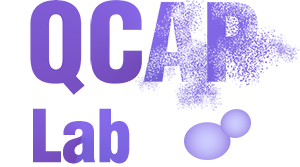Abstract:
Effective proteome homeostasis is key to cellular and organismal survival, and cells therefore contain efficient quality control systems to monitor and remove potentially toxic misfolded proteins. Such general protein quality control to a large extent relies on the efficient and robust delivery of misfolded or unfolded proteins to the ubiquitin-proteasome system. This is achieved via recognition of so-called degradation motifs—degrons—that are assumed to become exposed as a result of protein misfolding. Despite their importance, the nature and sequence properties of quality-control degrons remain elusive. Here, we have used data from a yeast-based screen of 23,600 17-residue peptides to build a predictor of quality-control degrons. The resulting model, QCDPred (Quality Control Degron Prediction), achieves good accuracy using only the sequence composition of the peptides as input. Our analysis reveals that strong degrons are enriched in hydrophobic amino acids and depleted in negatively charged amino acids, in line with the expectation that they are buried in natively folded proteins. We applied QCDPred to the entire yeast proteome, enabling us to analyse more widely the potential effects of degrons. As an example, we show a correlation between cellular abundance and degron potential in disordered regions of proteins. Together with recent results on membrane proteins, our work suggest that the recognition of exposed hydrophobic residues is a key and generic mechanism for proteome homeostasis.
